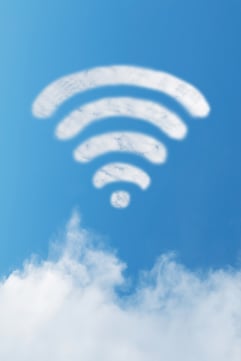 When businesses, communities, or organizations begin looking into improving their connectivity and communication, one of the first solutions they turn to is wireless networking, and for good reason. Wireless networking is essentially when a computer-based network uses wireless data connections for connecting network nodes. It is an effective alternative to traditional wired networks and carries multiple benefits, including:
When businesses, communities, or organizations begin looking into improving their connectivity and communication, one of the first solutions they turn to is wireless networking, and for good reason. Wireless networking is essentially when a computer-based network uses wireless data connections for connecting network nodes. It is an effective alternative to traditional wired networks and carries multiple benefits, including:
- Resolving connectivity issues where fiber or copper cannot go
- Eliminating recurring fees charged by phone companies
- Giving you easy access to critical information at the point of work
- Providing reliable network connections that minimize downtime and improve productivity
- Extending your secure network to a wider area of coverage
Even with great cost-savings and other benefits, many decision-makers still need to ensure wireless solutions are for them and their stakeholders (employees, residents, etc.). To help streamline this process, here is a list of some of the most frequently asked questions about wireless networks.
What is Wireless Networking?
As mentioned earlier, wireless networking is essentially using a digital method for data transfer. In order to do this, a wireless solution creates a Wide Area Network (WAN). A WAN is used to cover large areas, such as distance between neighboring communities (cities, towns, villages, etc.). It then provides connections between businesses (like branch offices) or acts as a public internet system.
The core benefit of using an innovative wireless solution is typically cost-savings (you eliminate month-to-month payments to the phone company), but the benefit of having a fast, reliable network for all of your devices cannot be overlooked. We live and work in a world that runs on connectivity and communication, and a wireless network is a key piece in ensuring we having the capabilities we need.
How does it work?
Wireless networks are typically installed in one of the following ways:
- Point to Point Microwave – Transporting data from point A to point B
- Point to Multipoint Microwave – Transporting data from point A to points B, C, and D on the other end at the same time
- Meshing Networks – Creates a WAN that acts as a giant wireless switch that has the ability to self-heal
- WiFi – Creates both indoor and outdoor hotspots that act as the end of a point of a wireless network typically tying a user to a device
What problems does Wireless Networking solve? (Benefits)
The very nature of being wireless solves many of issues associated with traditional wired connections. For example, your average wired infrastructure requires extensive labor or civil work to connect point A to point B, not only in initial set-up but also in maintenance. Implementing an innovative wireless solution negates that work, as wireless networks are easier to build and maintain.
Not only does a traditional solution require more time and attention, but having a wired system is costly because you need to pay a monthly bill in order to keep those connections working, as the lines are leased. Compare that to a wireless network that is paid for at setup, and then owned. The only ongoing costs are really the maintenance needed to ensure the network is up to date with the most current technology.
To reinforce some of the core benefits of wireless networking, here are the items mentioned above:
- Resolving connectivity issues where fiber or copper cannot go
- Eliminating recurring fees charged by phone companies
- Giving you easy access to critical information at the point of work
- Providing reliable network connections that minimize downtime and improve productivity
- Extending your secure network to a wider area of coverage
Who can take advantage of Wireless Networking?
One of the best things about wireless networking is that it offers a solution for nearly every industry and use case. Here are some of the most common:
- Towns and villages looking to connect buildings or integrate parks
- Colleges and universities looking to connect campus buildings and provide campus-wide connectivity
- Manufacturers who want to be able to effectively connect and communicate between buildings
- Healthcare organizations that need to be able to communicate on a reliable network between buildings or campuses



